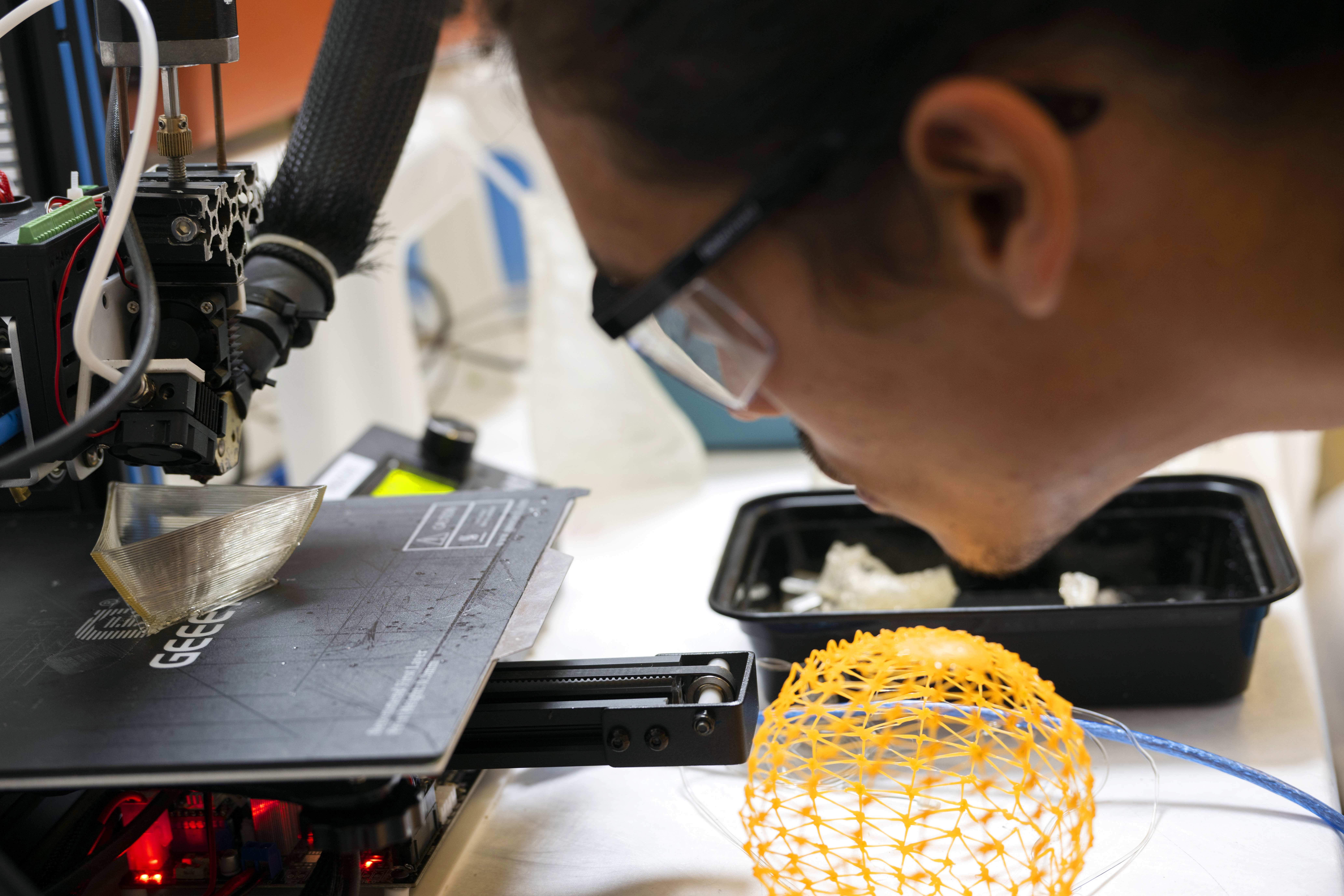An Edmonton startup company’s 21st-century innovation is taking 3D industrial printing to a new level, using a simple bonding process that mimics the mechanism of fabric zippers, a 19th-century invention.
ZiprPrint, the brainchild of COO Mohammad Khondoker, can print multiple materials, from polymers to metals, and then bond them together using a zipper-like interlocking of parts.
This system combines microfluidics-inspired technology with Fused Filament Fabrication (FFF), an extrusion type additive manufacturing technique. Like a high-tech glue gun, FFF builds parts by layering beads of melted plastic. ZiprPrint’s breakthrough is its single-nozzle system, capable of layering multiple materials and changing their composition continuously while printing.
“Our printer’s mechanical interlocking technique enhances the bonding strength between dissimilar materials by more than 40 percent,” Khondoker says. “It’s going to greatly improve the performance of multi-material polymer printed parts.”
Khondoker had not intended to design a new type of 3D printer when he began doctoral work in Professor Dan Sameoto’s research lab at University of Alberta in 2014. The team wanted to make stretchable antennae with both soft and hard components, but realized there was no commercial printer capable of printing with rubber or other smart materials. So, they decided to build one themselves.
‘Our printer’s technique enhances the bonding strength between dissimilar materials by more than 40 percent. It’s going to greatly improve the performance of multi-material polymer printed parts.’
“I spent the first three years of my PhD trying to build a printer,” says Khondoker. “It was a huge challenge.”
Using CAD software made available through CMC Microsystems, they developed a embedded intermixer technology that can mix rigid plastics with stretchable rubber in a single, rapid printing process. It can print directly from raw pellets of any thermoplastic, using a stand-alone pellet extruder that melts the polymer faster, enabling a high print speed but is also capable of inputting traditional filaments as well – a unique capability for current FFF printer systems.
“This opens up an entire world of printing possibilities, where you can make products that combine thermally or optically responsive materials with other parts made from hard plastic,” says Prof. Sameoto, who is also ZiprPrint’s Chief Technology Officer. “It’s true multi-material FFF 3D printing.”
Their project was so successful, the team decided to commercialize it, securing funding from private sources, Alberta Innovates and NSERC for new capabilities and products. ZiprPrint is now refining a prototype of the printer system with the help of recent graduate Luka Morita and seeking investors.
Khondoker has been recognized with an NSERC Alexander Graham Bell Canada Graduate Scholarship and an Alberta Innovates graduate scholarship. He has also received advice from investors and experienced entrepreneurs at Inventures, Alberta’s annual innovation fair and ADMACOM in Berlin, Germany in close partnership with current CEO Adam Ostashek.
One potential application is robots and prosthetic devices with more complex, soft structures, including artificial muscle, Khondoker says. “With a high-end setup, this printer can have an extrusion rate of one kilogram of pellets an hour, compared to other pellet-based printers now on the market that can handle 100 grams per hour. This could be useful to companies using 3D printers to produce large, complicated products such as these.”
Prof. Sameoto’s group is working with the Rehabilitative Research Centre at the University of Alberta to produce sensor-integrated prosthetics that can improve the quality of life of patients.
“We aren’t competing with printers to make items such as bottle caps or key chains,” he explains. “Our target market is any plastic industry with a low-volume production of a high-value product.”
Photo Credit: John Ulan, Photo Features
December 2022

